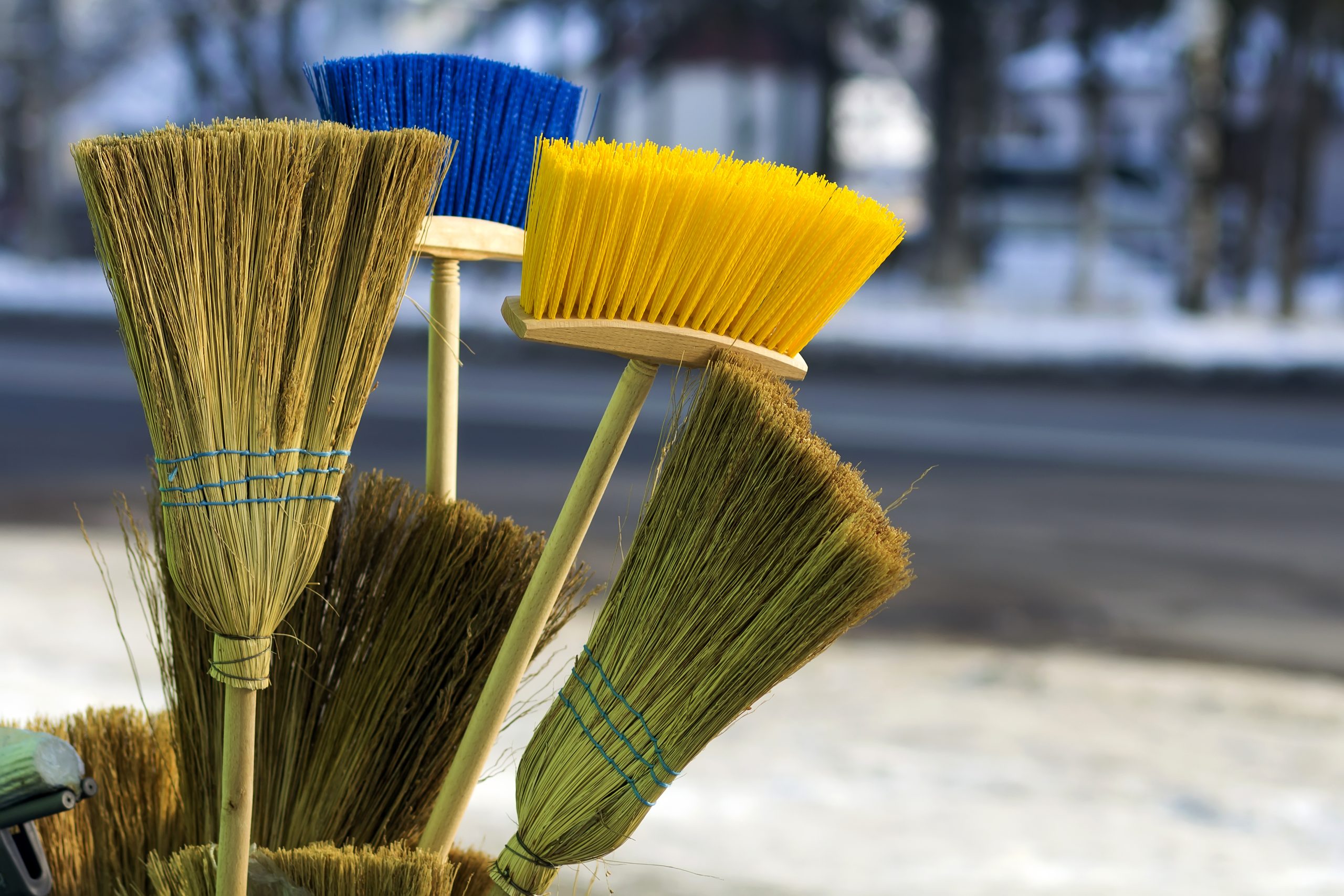Brooms have been a part of human households for as long as there have been floors to clean. From the grand halls of ancient castles to the modest kitchens of today, this unassuming tool has tirelessly battled dust and debris. Yet, in its simple form, the broom belies a surprising diversity.
HERE’S WHAT YOU NEED TO KNOW ABOUT THE TYPES OF BROOMS AND THEIR FEATURES
1) Traditional Brooms
Natural materials are the usual choice for traditional brooms, known as “Phool Jharu” or “jharoo” in many cultures.
These brushes’ long, thin bristles are typically made from plant materials such as sorghum, maize husks, or coconut fibers.
These brooms are perfect for any surface, easily reaching every corner and crevice. They are not only practical, but they also have the added benefit of being eco-friendly. With a growing focus on sustainability, it’s an eco-friendly option for maintaining clean living spaces.
2) Modern Brooms
Modern brooms have evolved to include synthetic materials for bristles, like plastic or nylon, and have been designed with user comfort and efficiency in mind.
Here are some common subtypes you might encounter:
- Angled Brooms
As its name suggests, angled brooms have bristles that are angled relative to the handle. This design change isn’t just for show; it makes them ideal for both interior and outdoor cleaning because they can easily reach all those hard-to-reach places.
- Dustpan and Broom Set
The pair has made what is typically a tedious operation into something almost effortless: collecting and disposing of dust and debris. With the addition of a rubber lip to the dustpan’s edge, particles are kept contained, preventing them from scattering back onto the just-cleaned surface.
- Silicone Brooms
Designed with silicone bristles, they are perfect for pet-owning households since they pick up pet hair and tiny dust particles so well. The broom’s durability and effectiveness in cleaning a wide range of surfaces are both enhanced by the silicone composition.
- Push Broom
Push brooms are characterized by their wide bristle bases, making them ideal for covering large areas quickly.
- Robot Cleaner with Broom
Some contemporary robotic vacuum cleaners come with a sweeping feature that can be accomplished with the help of side brushes or attachments that are incorporated right in. These robots can sweep the trash into the path of the vacuum, which allows for more efficient cleaning.
HEARD ABOUT A PLASTIC BROOM ( PLASTIC JHAROO)?
Traditional brooms have been a household staple for centuries, known locally as “phool jhaaru.” However, they come with their set of challenges, dust (bhusa) being the chief among them. The aftermath of cleaning with a traditional broom often involves a second round of cleaning to get rid of the dust left behind. It’s a paradoxical chore that demands more work than it seemingly solves.
Hence, the Plastic Broom from Zidello outshines the ordinary Phool Jharoo! But do you know what else is there:
- The troublesome bhusa is a thing of the past. Its ingenious bristle design ensures the capture and lifting of dust, preventing scattering.
- Traditional brooms quickly lose bristles and lose effectiveness. But the plastic broom is built to last. Premium materials endure regular use.
- Its cost-effectiveness, coupled with its long lifespan, makes it a smart purchase for anyone looking to upgrade their cleaning arsenal

